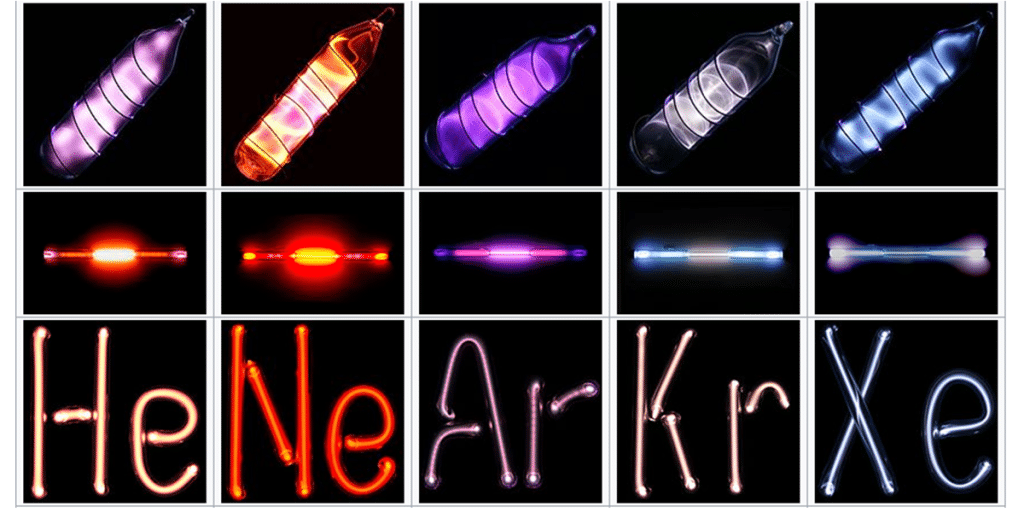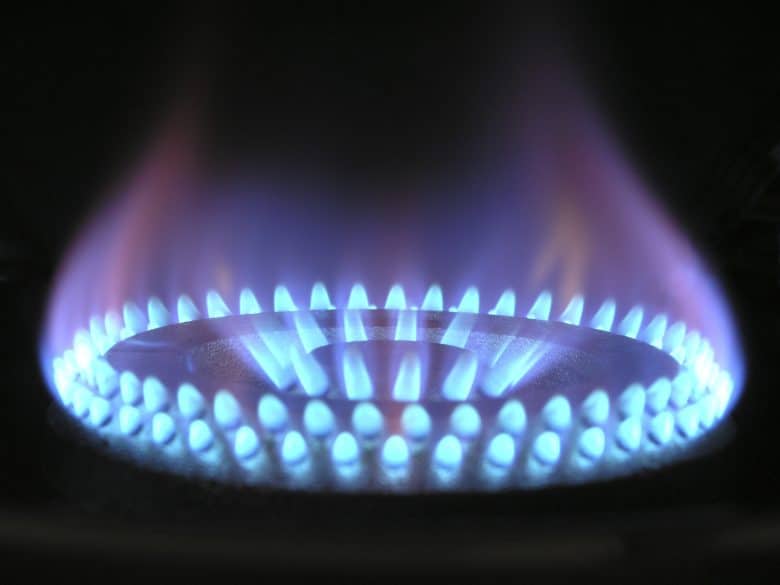The noble gases, inert gases or rare gases, are located in Group VIII of the periodic table. First, know about what is an inert gas before learning about its distinctive properties. The inert gas is the column of elements along the far right side of the periodic table. This group is a subset of the non-metals. Collectively, the elements are also called the helium group or the neon group. The noble gases are:
Helium (He), Neon (Ne), Argon (Ar), Krypton (Kr), Xenon (Xe), Radon (Rn), Oganesson (Og)
Except for oganesson, all of these elements are gases at ordinary temperature and pressure. There haven’t been enough atoms produced of oganesson to know its phase for certain, but most scientists predict it will be a liquid or solid. Both radon and oganesson consist only of radioactive isotopes.
What is Inert gas?
Since it was thought that noble gases did not combine with other elements to create compounds, they were originally referred to as “inert gases.” However, this phrase has fallen out of popularity in recent years, but it can still be found in older works.
Scientists have discovered that because electromagnetic forces hold larger noble gas atoms together less tightly than lighter noble gases, such as helium, the outer electrons of these heavier atoms can be released more easily. Many compounds of the gases xenon, krypton, and radon can be created due to this.
Only krypton, xenon, and radon may form stable compounds out of the six noble gases.
List of Inert Gases:
| Group No. | Period Number | Noble Gas Element | Atomic Number |
| 18 (also called zero groups) | 1 | He | 2 |
| 2 | Ne | 10 | |
| 3 | Ar | 18 | |
| 4 | Kr | 36 | |
| 5 | Xe | 54 | |
| 6 | Rn | 86 |
Properties of Noble Gases
The noble gases have low reactivity. They are, in fact, the elements on the periodic table with the least amount of reactivity. This is because they have a full valence shell. They have a low proclivity for gaining or losing electrons.

Hugo Erdmann invented the term “noble gas” in 1898 to describe these elements’ low reactivity, similar to how noble metals are less reactive than other metals. The noble gases have low electronegativities and high ionisation energies. At room temperature, the noble gases have low boiling temperatures and are all gases.
Summary of common properties
- Relatively unresponsive
- (oxidation number = 0) Complete outer electron or valence shell
- Extremely high ionisation energiesIonisation
- Electronegativities are quite low.
- Boiling points are low (all monatomic gases at room temperature)
- Under normal circumstances, there is no colour, odour, or flavour (but may form coloured liquids and solids)
- Non-flammable
- They will conduct electricity and glow at low pressure.
Sources of Noble Gases
Air contains neon, argon, krypton, and xenon, extracted by liquefying it and undergoing fractional distillation. The cryogenic separation of natural gas is the primary source of helium. The radioactive disintegration of heavier elements such as radium, thorium, and uranium produces radon, a radioactive noble gas.
Element 118 is a radioactive element created by accelerating particles and striking a target. Extraterrestrial sources of noble gases may be discovered in the future. Larger planets, in particular, have a higher abundance of helium than Earth.
Noble Gases and Their Applications
- Argon is commonly utilised in metallurgical operations to produce the required inert environment. It’s also employed in the titanium manufacturing process. Welding titanium, aluminium, stainless steel, and magnesium all benefit from this inert atmosphere.
- A little quantity of argon is employed in germanium and silicon crystals, which are used in electric light bulbs, transistors, and other electronic devices.
- When compared to any other liquid, helium has the lowest boiling point. It’s utilised in lasers to get the lowest temperatures possible.
- Helium is utilised as a cooling gas in nuclear reactors and as a flowing gas in liquid-gas chromatography. It’s used in things like airships and helium balloons.
- Helium balloons are used to monitor the weather in a specific area.
- Helium is favoured over hydrogen, even though hydrogen is less expensive because helium is more frequently available and hydrogen is extremely explosive. As a result, helium is preferred in aircraft due to safety concerns.
- Divers use it to dilute oxygen over nitrogen in the gas cylinders they use since nitrogen is easily dissolved in the blood and causes bends, a painful ailment. Helium has a slightly lower risk of creating bends than nitrogen.
- The reddish-orange glow created by neon lights is due to the usage of neon in discharge tubes.
- Because of their properties, xenon and krypton are used in photographic flash units.
Conclusion
Despite their tag of “rare gases,” noble gases aren’t very scarce on Earth or in the cosmos. Argon is the third or fourth most prevalent gas in the atmosphere (1.3 percent by mass or 0.94 percent by volume), with neon, krypton, helium, and xenon serving as significant trace elements.
Many people used to believe that noble gases were non-reactive and incapable of forming chemical compounds. Although xenon, krypton, and radon do not typically form compounds, examples of molecules containing these elements have been discovered.
Even helium, neon, and argon engage in chemical reactions at high pressure. Therefore, we hope you now have a clear concept regarding inert gases.
Frequently asked questions:
Q.1 What characteristics do noble gases have?
Ans. Noble gases also have the properties of conducting electricity, fluorescence, odorlessness, and colorlessness and are used in various situations where a stable element is required to maintain a healthy and consistent atmosphere. Helium, neon, argon, krypton, xenon, and radon are all members of this chemical family.
Q.2 Why don’t inert gases form compounds?
Ans. Inert gases have 2 or 8 electrons in their outermost orbit (duplet/octet). As a result of their relatively stable electrical structure, they are unreactive and do not form compounds.
Q.3 Is it possible to ionise a noble gas?
Ans. Because all noble gases (except helium, which has no p sublevel) have s and p outer electron shells, they are difficult to combine chemically. Their non-reactivity is explained by their high ionisation energy and nearly zero electron affinity.
Q.4 Is inert gas combustible?
Ans. Inert gases are non-flammable, non-combustible, and non-reactive to a wide range of materials. Argon, helium, nitrogen, and neon are some examples. In their liquid state, some inert gases are also cryogenic.
Q.5 Why don’t inert gases react?
Ans. Noble gases are highly stable and difficult to form chemical bonds because their full-valence electron shells continue to gain and lose electrons. There are some exceptions that noble gases do not react with other elements to produce compounds.
Q.6 Why are noble gases named so?
Ans. Helium, argon, krypton, xenon, and radon are noble gases in order of mass. They are known as noble gases because they are so magnificent that they do not react with anything. For this reason, they’re also known as inert gases.













Leave a Reply